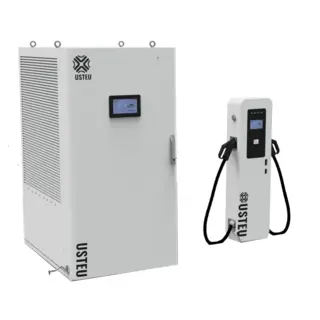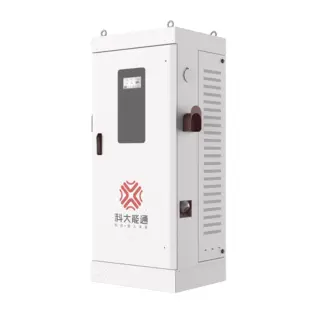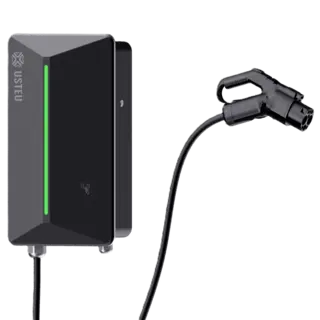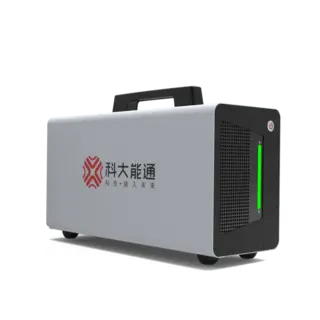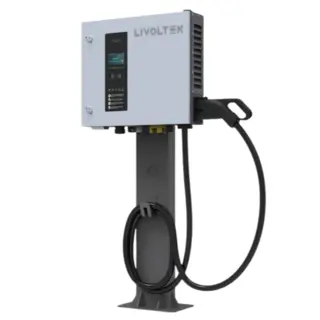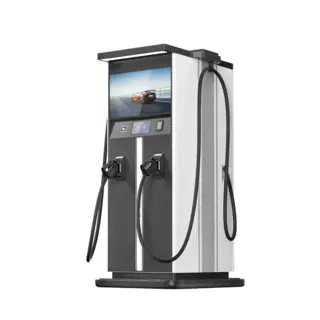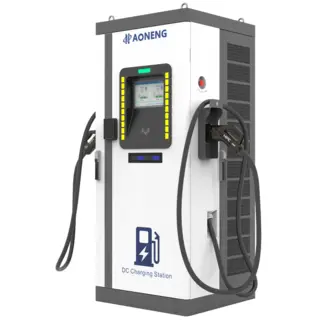DC (Direct Current) EV chargers are revolutionizing the electric vehicle (EV) charging landscape by offering rapid charging solutions. Unlike traditional AC chargers, commonly used for home charging, DC chargers significantly reduce the amount of time needed to recharge an EV battery. With the ability to replenish battery power in as little as 30 minutes, DC fast chargers are ideal for long-distance travel, providing drivers with quick, convenient, and accessible charging during their trips.
However, DC charging stations are more complex and costly compared to AC chargers. Their larger size and need for a high-power connection to the electrical grid contribute to their higher cost. As these systems rely on fast, high-current charging, their frequent use may lead to stress on the EV battery, potentially diminishing performance and longevity. Additionally, the increased demand on the grid can lead to higher carbon emissions, making it a less eco-friendly option compared to slower alternatives. Despite these challenges, DC chargers are a crucial technology in the widespread adoption of electric vehicles, addressing the issue of range anxiety and enabling more drivers to transition to electric mobility.
DC charging stations operate by converting alternating current (AC) to direct current (DC) on-site, delivering DC power directly into the EV battery. This process results in a much faster charging experience compared to AC charging. Some advanced stations can provide up to 350 kW of power, drastically cutting down the time it takes to charge a vehicle.
DC chargers are instrumental in promoting the adoption of electric vehicles, which in turn help reduce emissions and combat climate change. They help drivers confidently overcome range anxiety, positioning your business as a leader in the shift towards electric mobility.
DC chargers quickly charge EV batteries to around 80% capacity, after which the charging output slows down to prevent overcharging. This regulation helps protect the battery’s health, improving its performance and lifespan.
The widespread availability of DC fast chargers allows EV drivers to seamlessly integrate charging into their everyday routines. Whether charging during meals, shopping, or brief stops, these chargers offer flexibility for drivers on the go.
DC fast charging stations are designed with user convenience in mind. They are weatherproof, shockproof, and operate reliably around the clock, often equipped with simple tap-to-pay functions for ease of use.
DC chargers provide quick recharging options during long journeys, eliminating concerns about running out of power. With quick charging times, EV owners can rely on these stations to recharge and continue their travels with minimal interruptions.
DC chargers deliver a rapid power output, typically ranging from 90 kW to 400 kW. This high-speed charging significantly reduces downtime for EV owners, enhancing convenience for long-distance travel.
The Pioneer of DC Fast Charging: Developed in Japan, CHAdeMO was the first DC fast-charging standard. It features a large, round connector capable of delivering up to 62.5 kW of DC power. Widely used in Asia, this standard is also available in parts of Europe and North America. While its large connector and lack of integrated communication protocol are limitations, its rapid charging capabilities and support for brands like Nissan, Mitsubishi, Toyota, and Honda make it a popular choice for certain EV models.
The North American Standard: The CCS Combo 1 connector is based on the SAE J1772 standard and is the dominant choice for DC fast charging in North America. It supports both AC Level 2 and DC charging, offering up to 400 kW of power at 200 amps. Tesla drivers can also use this connector with an adapter, making it a versatile option. Its key strengths lie in high power output and a built-in communication protocol, though its larger size and limited adoption outside North America may be drawbacks.
Europe’s DC Charging Standard: The CCS Combo 2 connector, based on the IEC 62196-3 standard, is the preferred DC charging standard for European vehicles. It combines the Type 2 AC plug with two additional DC pins, enabling both AC and DC fast charging. Offering up to 350 kW of power at 200 amps, CCS Combo 2 is widely available across Europe, but its limited presence in North America remains an issue.
The Chinese Standard: Developed as China’s national DC charging standard, GB/T connectors are compact and capable of delivering up to 200 kW of power with 400 amps of current. While the connector is primarily used in China and limited to domestic EV brands, its widespread availability in the region makes it a key player in the country’s growing EV infrastructure.
EV batteries follow a specific "charging curve" during the charging process. Initially, charging occurs at a slower rate, considering factors such as battery level and external conditions. As the battery reaches around 80% capacity, the charging speed slows down significantly, extending the time required to fully charge the vehicle.
To optimize charging times and battery health, it’s recommended to unplug the EV when it reaches 80%. Charging beyond this point not only takes longer but can also increase wear on the battery. Stopping at 80% also improves charger availability, helping other EV drivers access the fast-charging stations more quickly.

Several factors, both external and related to the technology itself, can influence how quickly your electric vehicle (EV) charges using a DC charger. Keep these in mind the next time you're charging your EV.
Extreme temperatures can slow down the charging process, as each EV battery has an optimal temperature range for efficient operation. When temperatures fall outside this ideal range, charging may take longer.
DC fast chargers come in a range of power ratings, from 24kW on the lower end to up to 350kW for high-end models. Any charger rated above 43kW is typically classified as a rapid charger. The higher the power rating, the faster your EV will charge—provided your vehicle is compatible with that power level.
The amount of charge remaining in your battery, usually shown as a percentage, affects charging speed. Batteries with lower remaining charge tend to charge faster than those nearing full capacity. DC chargers operate most efficiently between 20% and 80% SoC. Beyond this range, the charging speed may decrease.

